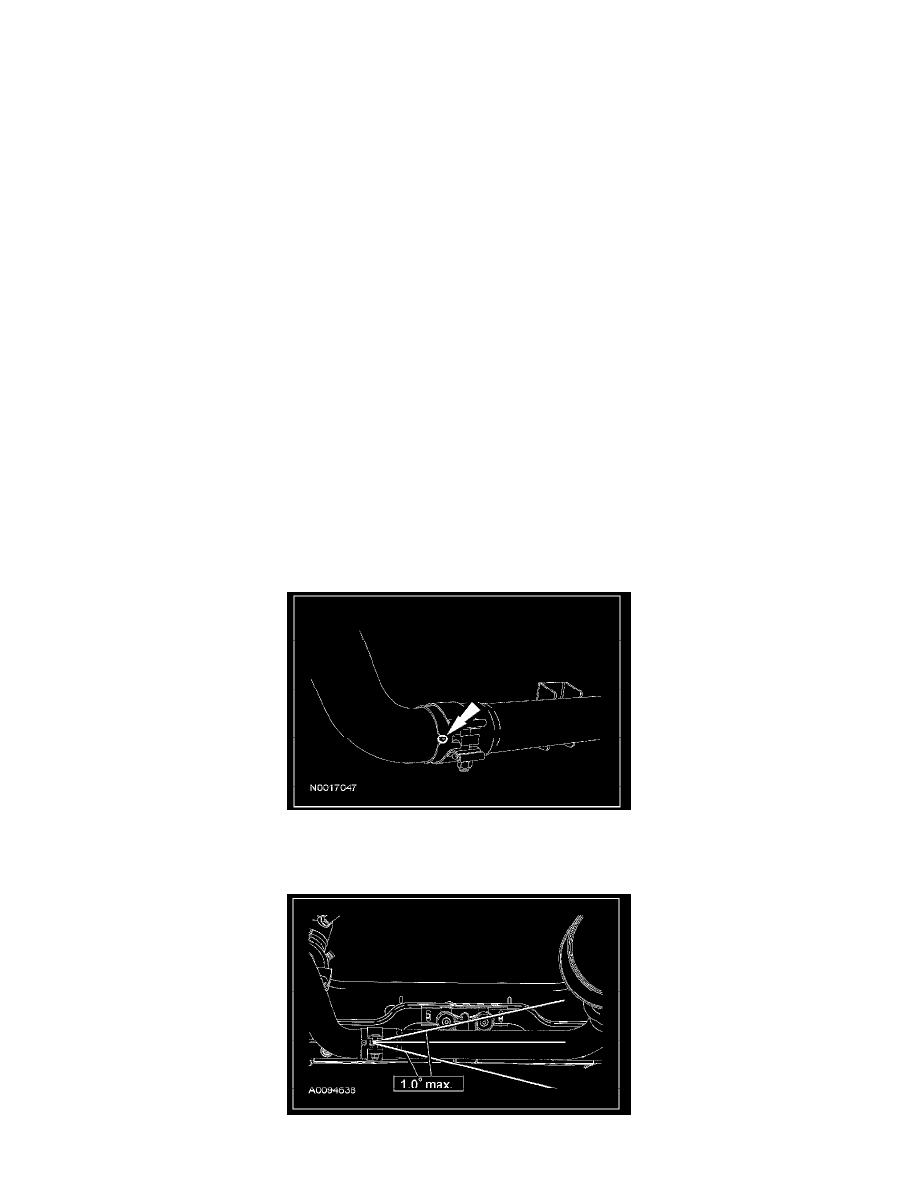F 150 4WD V8-5.4L Flex Fuel (2008)

bracket and isolator bolt. Let the LH side of the exhaust Y-pipe-dual catalytic converter hanger bracket and isolator hang down.
4.6L and 5.4L engines
5. Connect the RH HO2S sensor electrical connector.
All engines
6. NOTE: Using an abrasive pad, clean the exhaust clamp surface area of any surface rust.
Position the LH catalytic converter and loosely install the exhaust manifold nuts.
7. NOTE: Make sure to apply anti-seize lubricant to the threads of the sensors before installation.
NOTE: A special tool is available for use in installing the catalyst monitor sensor. An open-end wrench can be used for ease of installation.
Install the LH catalyst monitor sensor.
^
Tighten to 40 Nm (30 lb-ft).
4.6L and 5.4L engine
8. NOTE: Make sure to apply anti-seize lubricant to the threads of the sensors before installation.
NOTE: A special tool is available for use in installing the HO2S. An open-end wrench can be used for ease of installation.
Install the LH HO2S sensor.
^
Tighten to 40 Nm (30 lb-ft).
All engines
9. Loosely install the bolt for the LH side of the exhaust Y-pipe--dual catalytic converter hanger bracket and isolator.
10. Push the RH catalytic converter into place and loosely install the exhaust manifold nuts.
11. Make sure the catalytic converters are fully seated and the notch on the RH catalytic converter is aligned with the button on the LH catalytic
converter.
12. Tighten the catalytic converter exhaust Torca(R) clamp to 47 Nm (35 lb-ft).
13. Align the RH catalytic converter (crossover pipe) so that it is parallel to the transmission crossmember. The maximum allowable angle is 1.0
degree.
14. Tighten the catalytic converter hanger bracket bolts to 30 Nm (22 lb-ft).
